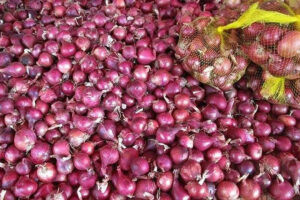DA resumes search for onion production sites in Davao

THE Department of Agriculture’s (DA) Davao regional office is resuming the search for potential onion production areas following the recent spike in prices of the root crop, which is hardly grown in the southern Philippines.
DA Davao Regional Director Abel James I. Monteagudo said a directive to explore possible onion farming sites nationwide dates back to 2017, but it was not pursued as a priority or initial land surveys showed unsuitable conditions.
“My predecessor directors (were) instructed by the previous two secretaries, especially Secretary (Emmanuel F.) Piñol, in 2017 that we should look for onion production areas,” he said during an Agribiz media forum last week.
Davao is largely planted to other high value crops such as coconut, banana, cacao, and other fruit.
“Some regions really were able to identify (sites) and some came out failing due to climate adaptability, and other reasons,” he said.
In Davao, the towns of Magsaysay and Matanao in Davao del Sur have started planting shallots, a smaller variety of the onion family, he said.
Mr. Monteagudo said the regional office is now looking into other parts of Davao del Sur as well as the other Davao provinces, noting that the DA is prepared to provide support in terms of hand tractors, irrigation, and fertilizer.
“It’s just a matter of giving them support and the necessary interventions,” he said.
Davao and its neighboring Soccsksargen region posted the highest onion demand in the southern Philippines, with per capita consumption of 1.82 and 2.03 kilograms, respectively, according to the DA’s Philippine Onion Industry Roadmap 2021-2025.
The top five onion producing regions in the country are all in the north: Ilocos, Cagayan Valley, Central Luzon, and Mimaropa.
“Although bulk of the production and areas planted to onion are in Luzon, the possibility of growing this commodity in the Visayas and Mindanao regions is now being considered and acted upon to augment the production as the local and international demand is expected to increase in the coming years,” the DA said in the roadmap.
The five-year report concludes that the Philippines needs to increase production to 279,270 metric tons in five years from 229,539 MT currently to achieve self-sufficiency. — Maya M. Padillo




